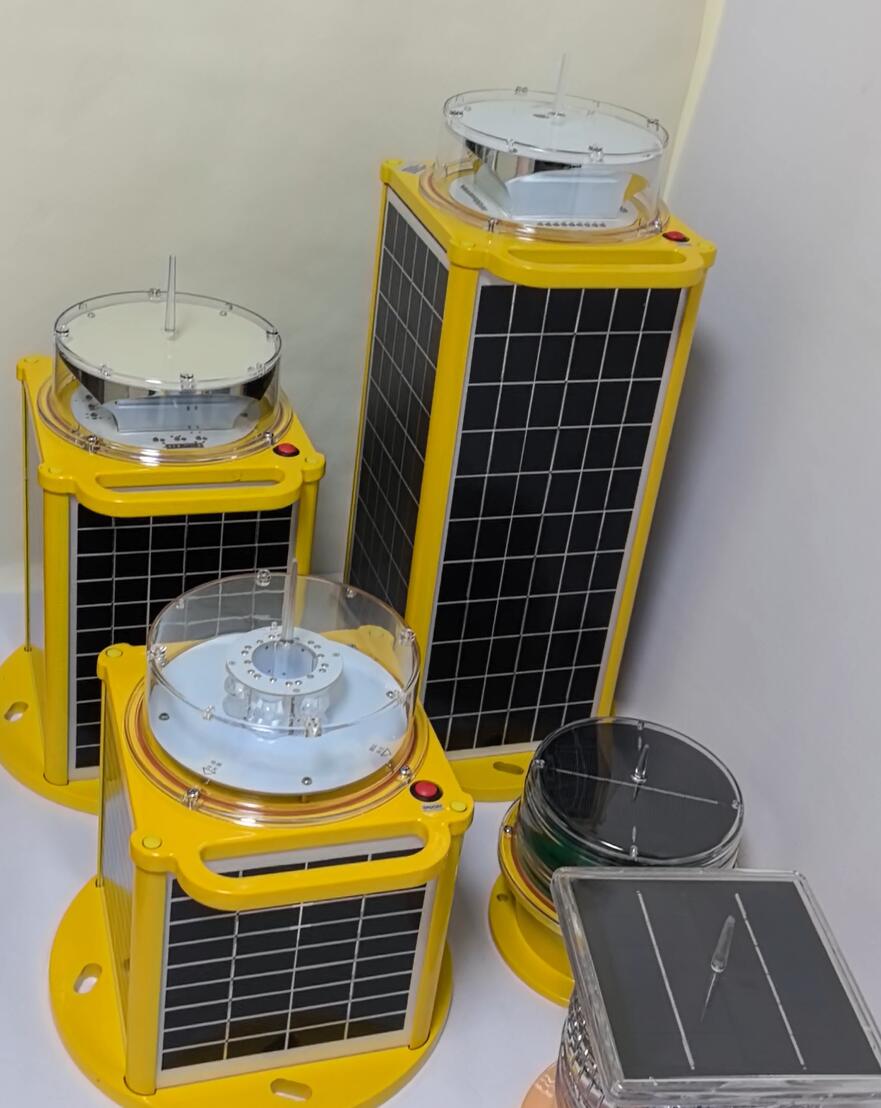Solar Aircraft Warning Light: A Sustainable Solution for Aviation Safety
As the demand for sustainable infrastructure continues to grow, the solar aircraft warning light has emerged as a reliable and eco-friendly alternative to conventional lighting systems. Designed to enhance visibility of tall structures and ensure the safety of low-flying aircraft, these systems offer autonomous operation, low maintenance, and exceptional performance in remote or off-grid locations.
A Smart Evolution in Aviation Safety
Traditional aircraft warning lights have long depended on grid power, requiring extensive wiring, regular maintenance, and backup systems. The solar aircraft warning light eliminates many of these challenges by harnessing solar energy to operate independently. This shift not only supports sustainable energy goals but also simplifies deployment, especially in hard-to-access areas like mountaintops, offshore wind farms, and uninhabited regions.
Solar-powered systems are especially vital in regions where reliable electricity is unavailable. Their self-sufficiency makes them ideal for temporary installations, remote towers, and long-term aviation safety structures.

Core Features and System Design
A typical solar aircraft warning light system includes the following key components:
Solar Panels: These convert sunlight into electrical energy and charge the internal batteries.
Energy Storage: High-capacity rechargeable batteries store power to ensure continuous operation during nighttime and cloudy conditions.
LED Light Unit: The light source is usually composed of high-efficiency LEDs with superior visibility and low energy consumption.
| Solar Aircraft Warning Light |
Photocell Sensors: Integrated sensors allow automatic switching between day and night modes based on ambient light conditions.
Control Electronics: Microcontrollers manage the charging, lighting schedules, and safety diagnostics.
The system is designed to function year-round, often with the capability to operate for multiple days without sunlight. This resilience ensures uninterrupted safety, even in adverse weather conditions.
Advantages of a Solar Aircraft Warning Light
The solar aircraft warning light brings a wide range of advantages, making it the preferred option for modern infrastructure projects:
Energy Independence: No dependency on external power sources means the system can function in the most isolated locations.
| Solar Aircraft Warning Light products |
Environmentally Friendly: By using renewable energy, the system reduces carbon emissions and aligns with global environmental standards.
Minimal Maintenance: With no moving parts and long-life LED technology, the system requires significantly less upkeep.
Fast Deployment: Installation is simplified due to the lack of wiring and connection to grid power, reducing setup time.
Operational Reliability: Designed to meet international aviation safety standards, the system delivers consistent performance in diverse environments.
These features make solar aircraft warning lights ideal for a wide variety of sectors, including telecommunications, wind energy, civil engineering, and defense.
Compliance with Global Standards
To ensure flight safety, solar aircraft warning light systems must comply with aviation regulations. International standards, such as those outlined by the International Civil Aviation Organization (ICAO) and the Federal Aviation Administration (FAA), provide specific requirements on light intensity, color, flash rate, and visibility range.
Depending on the structure's height and location, solar aircraft warning lights may be classified into:
Low-Intensity: Typically red, used for shorter structures under 45 meters.
Medium-Intensity: Available in red or white, used on structures ranging from 45 to 150 meters.
High-Intensity: Usually white, required for structures over 150 meters or located near airports.
Proper classification ensures the structure is clearly visible to pilots under all operating conditions.
Applications Across Industries
The versatility of the solar aircraft warning light allows it to be adapted to a wide variety of industries and use cases:
Wind Farms: Both onshore and offshore turbines often rely on solar lights for reliable marking in isolated areas.
Telecommunication Towers: Remote antennas and relay stations benefit from solar lighting where grid connections are impractical.
High-Rise Buildings: Urban structures without reliable rooftop power can use solar systems to meet aviation lighting requirements.
Temporary Structures: Construction cranes, drilling rigs, and mobile towers often utilize solar lights due to their portability.
Transport Infrastructure: Bridges, dams, and rail crossings may also be marked with solar lights to increase aviation and general transportation safety.
In each case, the solar aircraft warning light ensures visibility, simplifies installation, and reduces the environmental footprint of the project.
Technological Enhancements
Modern solar aircraft warning lights incorporate smart features for better performance and monitoring:
Automatic Fault Detection: Built-in diagnostics alert operators in case of light failure or battery issues.
Wireless Communication: Some systems include remote control and reporting via GSM or satellite networks.
GPS Synchronization: Flash patterns can be synchronized across multiple lights using GPS timing to ensure uniformity.
Rugged Construction: Lights are designed to withstand harsh environments, including high winds, corrosive sea air, and extreme temperatures.
These innovations not only increase reliability but also reduce the need for physical inspections, leading to lower operational costs and improved safety assurance.
Looking Forward
As global aviation traffic grows and sustainable practices become increasingly vital, the solar aircraft warning light represents the future of obstruction marking. Its seamless integration of renewable energy, intelligent monitoring, and adherence to aviation regulations makes it an indispensable solution for modern infrastructure.
With urban development reaching new heights and remote installations expanding globally, solar aircraft warning lights will play a pivotal role in maintaining airspace safety while supporting clean energy objectives.
The solar aircraft warning light is more than just a safety tool—it’s a modern, responsible choice for marking hazards in the sky. Through its efficient use of solar power, minimal maintenance demands, and compliance with strict aviation standards, it delivers reliable performance where it's needed most. As technology advances and the push for sustainability accelerates, solar lighting systems will remain essential to protecting aircraft and supporting a greener aviation landscape.
